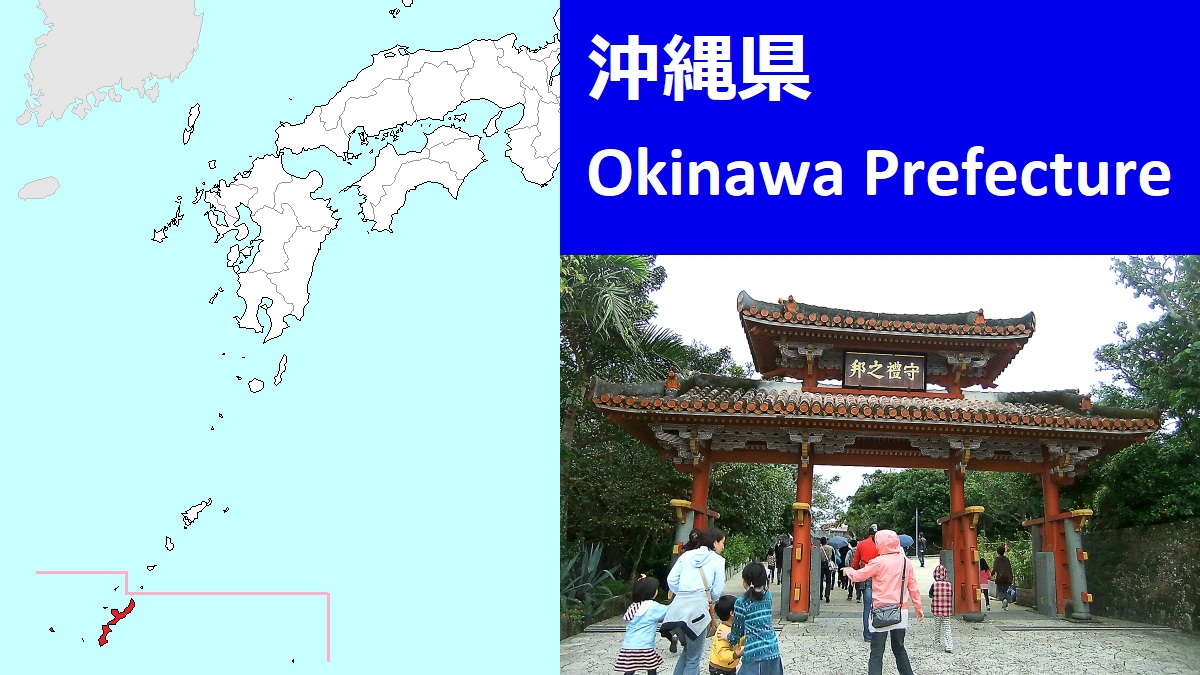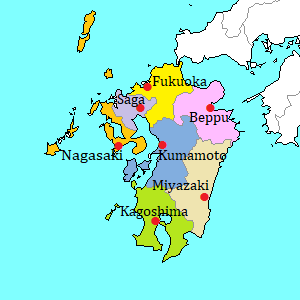Okinawa Prefecture [沖縄県]
Okinawa Prefecture is the southernmost part of Japan, and there is Taiwan to the west.
Between Kyushu Island and Taiwan, many small islands lie in an arc shape.
The northern half belongs to Kagoshima Prefecture, and the southern half forms Okinawa Prefecture.
In Okinawa Prefecture, the largest island is Okinawa Island.
It is located about 550 to 650 km south-southwest of Kyushu Island
It is at the northernmost of the prefecture but it is the center of politics and culture in the prefecture.
The prefectural capital is Naha city (那覇).
The other main islands are Miyako Island (宮古島) about 280 km southwest of Naha, and Ishigaki Island (石垣島) about 400 km southwest of Naha.
In addition, the islands close to Taiwan are sometimes called "Yaeyama Islands".
The whole area of the prefecture is in the subtropical zone, so it is very warm and it has a relatively heavy rainfall.
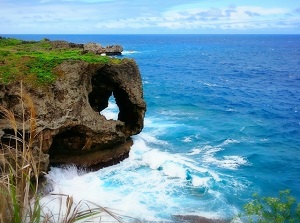
Cape Manzamo in Okinawa Island
This area was called Ryûkyû (琉球) in the old days.
Okinawan (people in Okinawa) is slightly different from Japanese in the mainland in race.
But the ancestor of Okinawan was same as Japanese, and it is said that the race has changed in the isolate area for a long time.
And Ryûkyû language close to Japanese language has been spoken in Okinawa Prefecture.
In 1429, Ryûkyû Kingdom was founded by King Sho Hashi.
He constructed the castle in Shuri (current Naha) and Shuri became the capital.
In 1609, Satsuma Domain in Kagoshima invaded, and Ryûkyû lost out.
Ryûkyû became a dependency of Satsuma Domain, but the unique culture was kept.
In 1879, after the foundation of Japan's modern government, Ryûkyû Kingdom was changed to Okinawa Prefecture.
In the Pacific War (World War II), Okinawa was attacked by the U.S. army first in Japan.
Naha city was destroyed by the air laids in October, 1944.
And from April to June in 1945, the furious ground battles were waged on Okinawa Island.
That was the only ground battle in Japanese history.
After the end of the war, Okinawa was placed under U.S. rule.
And many military bases were constructed in Okinawa Island.
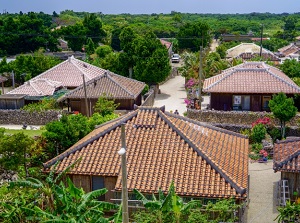
Taketomi Island
In the 1960s, Okinawa became the front-line bases of Vietnam War.
So the business in Okinawa became better, but many accidents and incidents by U.S. army occured in Okinawa Island.
The United States wouldn't return Okinawa to Japan, but a few cases by American soldiers made Okinawan angry and developed into a riot in 1970.
After the negotiations between Japan and the United States, Okinawa was returned to Japan in 1972.
But there are still many U.S. military bases in Okinawa, so fundamental solution hasn't been achieved.
In Okinawa Prefecture, we can see Ryûkyû culture different from the mainland of Japan.
And the most islands are good resort areas because of the subtropical climate.
Of course, we can learn the hardships of Okinawa in the history.
Okinawa Prefecture has no railroad.
Only a monorail in Naha runs from Naha Airport through central area of Naha.
To tour around Okinawa Island, we can use frequent route buses.
And some regular sightseeing bus tours are operated from Naha.
Tourist Attractions in Okinawa Prefecture
South part in Okinawa Island
Middle and north part in Okinawa Island
Other islands of the prefecture
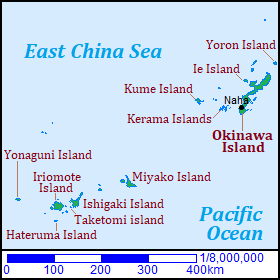
Transportation
Airport
Naha Airport is located about 4 km west of the center of Naha city.
It has the flights from Haneda (Tokyo), Itami (Osaka) and Chubu (Nagoya), Fukuoka frequently, and has also the flights from many cities in the mainland, and the islands in Okinawa Prefecture.
As the main airports in Okinawa Prefecture, there are Miyako Airport (Miyako Island) and Ishigaki Airport (Ishigaki Island).
Ferry
- To Naha from Kagoshima : 19 to 20 hours.
- To Miyako Island from Naha : 9 hours.
- To Ishigaki Island from Miyako Island : 5 hours.
Main events in Okinawa Prefecture
Naha Haarii (Early May)
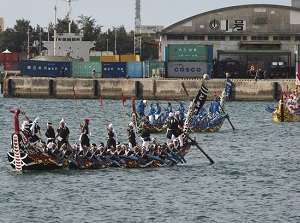
Photo by Okinawa Convention & Visitors Bureau
Naha Haarii is one of the greatest festivals in Okinawa Prefecture.
"Haarii" is the festival of dragon boat race to pray for catching many fish and navigation safety.
It is said that this festival was introduced from China about 600 years ago.
The festival has been held in many areas of Okinawa Prefecture, and Naha's festival is the biggest.
In a race, three large dragon boats compete in speed.
Each boat is about 15 meters long, and 32 rowers, 3 steerers, 2 ringer, and 5 other crewmembers are on board.
Over 100 teams join the race.
And, during the festival, the parades and the other events are held.
Eisaa (Late August)
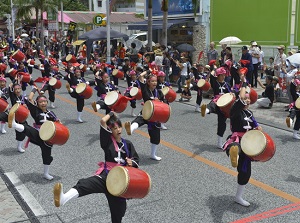
Photo by Okinawa Convention & Visitors Bureau
Eisaa is the Bon dance held in Okinawa Prefecture.
Since the early 17th century, the dance with only Buddhist invocation had been held during Bon season for commemoration of the ancestors.
In the 19th century, young people added folk songs and drums to the dance.
Additionally, showy performances and costumes have been added, and it has developed as the major event of Okinawa.
The festival is held in many cities and towns in Okinawa.
Local foods and products in Okinawa Prefecture
About Okinawa foods, check this page.
Okinawa soba
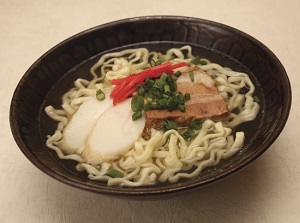
Photo by Okinawa Convention & Visitors Bureau
Okinawa soba is a popular noodle in Okinawa Prefecture.
Japanese "soba" is the noodle of buckwheat.
But the noodle for Okinawa soba is made of wheat flour.
And the process to make the noodle is more like Chinese noodle.
The dish looks like Japanese udon.
The soup is Japanese dashi with pork.
And sliced cooked pork back ribs, sliced kamaboko (minced and steamed fish) are topped on the noodle.
Gôya
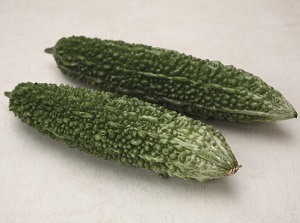
Photo by Okinawa Convention & Visitors Bureau
Gôya is called as "bitter melon" in English.
It has been one of the popular cooking ingredients in Okinawa area, but it is going to be popular in the mainland of Japan recently.
The fruit is filled with soft pith and seeds, and the outside is used as the food.
It has bitter taste and light crunchy texture.
It is used in the various dishes.
Chanpuru
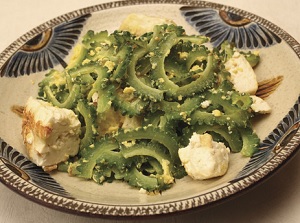
Photo by Okinawa Convention & Visitors Bureau
Chanpuru is the popular dish in Okinawa.
Various vegetables, pork, egg and tofu are fried at the same time.
And it is seasoned with salt or shoyu (soy sauce) simply.
The main vegetables are goya, cabbage, bean sprout, carrot, etc.
Also, papaya and loofah are sometimes used.
And luncheon meat is sometimes used instead of pork.
Awamori
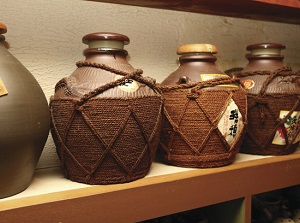
Photo by Okinawa Convention & Visitors Bureau
Awamori is the distilled spirit in Okinawa.
Awamori is made of fermenred rice.
But, because Indica rice produced in the torrid zone is used and is fermented with a black aspergillus, the flavor is different from Shochu (the distilled spirit in mainland of Japan).
General Awamori has 30 percent alcohol.
The spirit aged for over 3 years are called "Koshu" (Old spirit), and has 40 to 60 percent alcohol.
Chinsukou
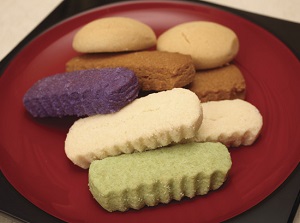
Photo by Okinawa Convention & Visitors Bureau
Chinsukou is a traditional sweet in Okinawa, and it looks like a cookie.
Originally, the confectionery was invented by cook of the Ryûkyû king in the 18th century.
And only royal family was able to eat.
After Ryûkyû became under control of Japan in the 17th century, the cook began to sell Chinsukou to the public.
Since that, it has been a popular confectionery in Okinawa.
Bingata
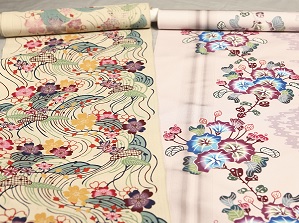
Photo by Okinawa Convention & Visitors Bureau
Bingata is a traditional resist-dyed cloth in Okinawa.
Since around the 14th century, the dyed clothes had been used as the costume of the royal family and noble family in Ryûkyû kingdom.
The colors are bright, and the patterns had been influenced by China and Japan.
Bingata is still created for beautiful kimono and obi (sash).
And you can get the fancy goods of Bingata for souvenirs.
Minsaa
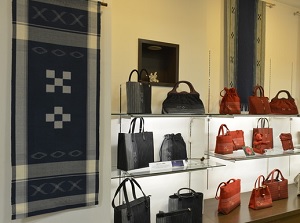
Photo by Okinawa Convention & Visitors Bureau
Minsaa is a traditional cotton cloth, and has been created in Yaeyama Islands (the west part of Okinawa Prefcture).
It had been woven as obi (sash) by young lady, and it was given to her fiance for a present.
On the cloth of Minsaa, the patterns of five squares and four squares are alternately aligned.
The meaning is "Please be with me for all time." by a word game of Japanese.
You can get the fancy goods of Minsaa for souvenirs.
Ryukyu Glass
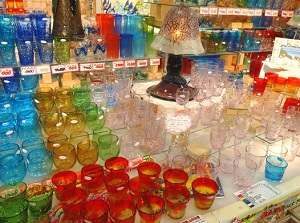
Photo by Okinawa Convention & Visitors Bureau
Ryukyu Glass is the glassware produced in Okinawa Island.
Okinawa had been under U.S. rule after World War II.
Naturally, the materials to make glassware were in very short supply.
So the artists made the works using the empty bottles of cola and beer discarded at U.S. military base.
But the works have the original color of the bottles and small air bubbles create an unique charm.
It has been a traditional craft in Okinawa.

